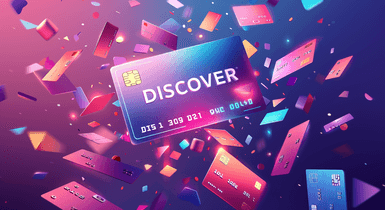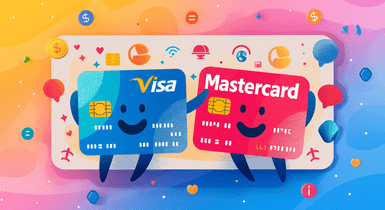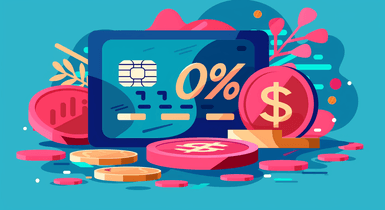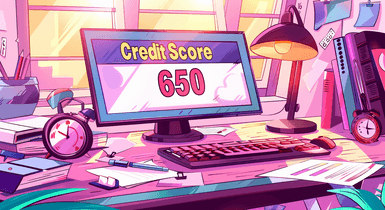Exploring the Best Ways to Consolidate Credit Card Debt
Contents
- Personal Loans: A Flexible Solution
- Debt Consolidation Programs: Simplifying Payments
- 0% APR Balance Transfer Offers: Temporarily Avoiding Interest
- Second Mortgage or HELOC: Leveraging Home Equity
- 401(k) Loan: Tread Carefully 401(k)
- Peer-to-Peer Lending: Collaborative Borrowing
- Equity in Owned Vehicles: A Tangible Asset
- Conclusion
- Personal Loans: A Flexible Solution
- Debt Consolidation Programs: Simplifying Payments
- 0% APR Balance Transfer Offers: Temporarily Avoiding Interest
- Second Mortgage or HELOC: Leveraging Home Equity
- 401(k) Loan: Tread Carefully 401(k)
- Peer-to-Peer Lending: Collaborative Borrowing
- Equity in Owned Vehicles: A Tangible Asset
- Conclusion

Credit card consolidation means combining multiple credit card bills into one single bill. How to consolidate credit card debt without hurting your credit? Debt consolidation affects your credit in several ways:
- Your credit rating may temporarily decrease;
- A late payment on a consolidation product can also hurt your credit;
- If you pay on time, the overall effect can be positive.
How do you consolidate credit card debt? There are several options to consolidate credit card debt in one payment. It’s beneficial if you qualify for a low interest rate.
Today, we will discuss what you must consider before taking a loan and how to consolidate credit card debt.
Personal Loans: A Flexible Solution

Personal loans are one of the ways to consolidate credit card debt. They allow borrowers to combine numerous debts into one loan with more favorable conditions, a lower interest rate, and one set regular monthly payment.
Advantages:
- Save money on higher interest with the help of a loan with a lower rate;
- Use personal loans to consolidate accounts and credit card debt;
- Have a convenient repayment period: from 36 to 84 months;
- Pay off your consolidated debt in one regular monthly payment;
- Strengthen control over finances.
Here’s where you can start:
- See what personal loans you qualify for.
- Fill out a personal loan application in a matter of minutes.
- Get a consent decision.
- Get funds.
- Pay off the loan.
Debt Consolidation Programs: Simplifying Payments

As mentioned earlier, debt consolidation merges your high-interest credit card bills into one monthly payment at a lower interest rate. Paying less interest saves you money and speeds up your debt repayment.
If you are unable to pay your credit card bills that exceed the minimum amount each month, a debt consolidation program is a very good way to regain control of your finances.
Types of Debt Consolidation Programs
There are three forms of debt consolidation programs:
- Consolidation of debts of non-profit organizations.
- Loan to consolidate credit card debt.
- Repayment of debts.
For additional advice, call a non-profit credit counseling agency, such as InCharge Debt Solutions.
0% APR Balance Transfer Offers: Temporarily Avoiding Interest

Transfer existing balances from other cards to a balance transfer credit card. This way, you’ll save money on interest with a 0% introductory balance transfer annual percentage rate (APR).
Advantages of this method:
- During the introductory period, you can pay off your credit card debt without extra interest charges.
- Pay off the balance during this period, and you won’t face any extra interest charges.
- If you get a new 0% APR card, you can transfer your remaining balance to it after the first introductory period ends.
- You can explore the terms and conditions of the card to choose the one with the lowest balance transfer fee.
Disadvantages:
- Any balance left at the end of the promotional period will start accruing interest at the regular balance transfer rate.
- Additionally, some balance transfer cards might cancel your initial offer if you make a late payment, so it’s wise to set up automatic payments.
- You cannot transfer a balance that exceeds the card’s credit limit.
- Some lenders may also charge an over-the-limit fee.
There are various locations where you can discover offers for balance transfer credit cards, and it’s essential to explore all the alternatives. Places you can look for balance transfer credit cards include:
- Websites of credit card issuers.
- Personal finance websites that include credit card reviews.
- Credit card comparison websites.
When using a credit card comparison website, remember that these sites earn commissions from credit card companies whenever you apply for a card through them. Therefore, it distorts the picture of card expenses.
Credit card companies may send preapproved offers to customers who match their ideal credit criteria.
Here is the list of the best balance transfer credit cards:
- Long 0% intro APR: Wells Fargo Reflect® Card;
- Long 0% intro APR: Citi Simplicity® Card;
- Balance transfers and purchases: U.S. Bank Visa® Platinum Card.
Choose the best credit card to consolidate debt.
Second Mortgage or HELOC: Leveraging Home Equity

Home equity loans come with lower interest rates than credit cards, but they put your house on the line, making them a risky choice.
Pros:
- Interest rates for HELOC loans are usually lower than those for credit cards.
- Fixed home loan rates give you predictable payments.
- You don’t have to give up a low mortgage rate.
Cons:
- You use your home as collateral and face foreclosure if you can’t pay.
- When the value of your home falls, you may end up owing more than it’s worth.
- A minimum repayment period of 10 years is possible.
- Credit card debt is easier to discharge in bankruptcy.
A HELOC is a second mortgage structured like credit cards. Instead of receiving a lump amount, you take a loan against your equity—for example, to pay off credit card balances—with checks or a debit card tied to a line of credit.
Factors to consider:
- Low variable rate, but sometimes they offer a fixed rate option.
- For a home equity line of credit (HELOC), the closing costs and fees generally fall within 1% to 5% of the credit limit.
- With a home equity line of credit (HELOC), closing costs and fees typically range from 1% to 5% of the credit limit.
- Adjustable rates mean payments can go up.
- It’s harder to stay on budgeting.
- Options of interest-only payments increase debt.
401(k) Loan: Tread Carefully 401(k)
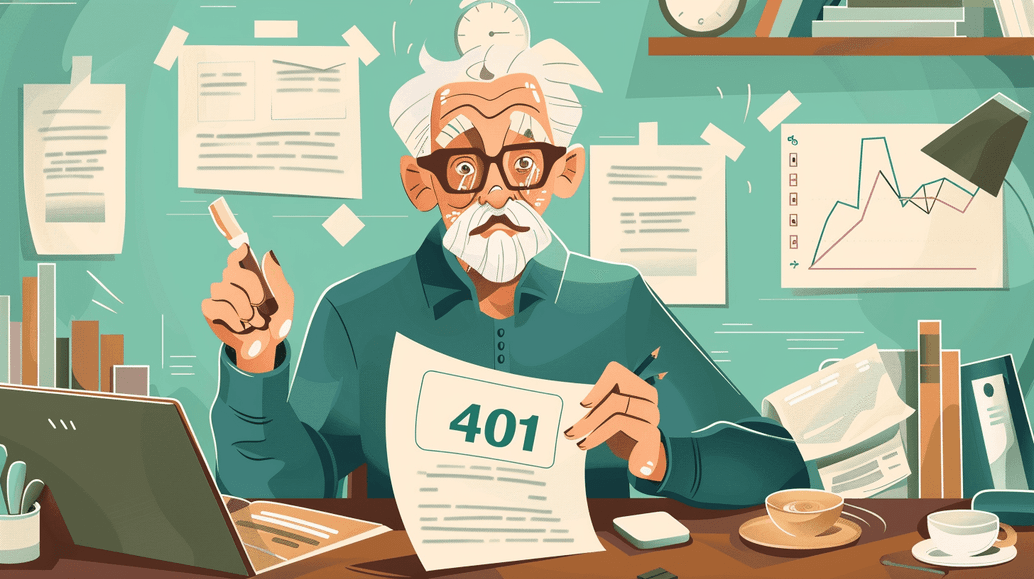
Consider loan 401(k) as a last resort to lower interest rates without impacting credit. There are such risks as a decrease in pension savings and fees.
It is a low-interest loan option that can help cover significant expenses. After excluding other loan options, A 401(k) may be an acceptable choice to repay debt at high interest or cover the necessary expenses. But you’ll need precise financial planning to repay it on time and avoid fines.
Peer-to-Peer Lending: Collaborative Borrowing

Try peer-to-peer lending for consolidated loans, benefiting from a win-win situation by bringing together loan seekers and those ready to invest. Loans for debt consolidation into one easy monthly payment and an investor who seeks a stable and decent return on investment are the advantages of this method.
Equity in Owned Vehicles: A Tangible Asset

Use the equity in your vehicle to secure your loan. Get access to lower rates than unsecured personal loans, but be aware of limitations on amounts and insurance requirements.
If you own a vehicle that’s fully paid off or has a low balance compared to its value, you might consider a car loan. These loans often have lower rates than unsecured personal loans. However, the loan amount is limited to the car’s value, and most states require full auto insurance, which can increase your monthly costs. Still, it’s a way to use your car to get a lower loan rate.
Conclusion
What is the best way to consolidate credit card debt? The best way to consolidate credit card debt depends on the amount of debt, your credit score, and finances you can get. Popular options include balance transfer cards and loans to consolidate your credit card debt. The latter is a good idea if your monthly debt payments (including mortgage or rent) are at most 50% of your income and you have a steady cash flow to cover the debt payments.
Credit card consolidation is a reliable approach if you are dealing with an acceptable debt and want to reorganize several accounts with different credit card interest rates, payments, and repayment dates. For many people, it is a chance to reduce the financial burden and optimize costs. However, it is not a panacea if you are overwhelmed with debts and have no hope of repaying them, even with reduced payments.

